The skies above: Serious aircraft 'near-misses' double
Private pilots are to be urged to fit new safety devices as BBC research reveals the number of near-misses in UK skies has risen by 60% in five years.
The number of accidents reported to the Air Accident Investigation Branch (AAIB) has also risen - up from 654 accidents in 2013 to 708 in 2017.
Pilots who spoke to the BBC blamed the rise on increasingly busy skies.
The Civil Aviation Authority (CAA) said the UK safety record was "one of the best" in the world.
The number of air proximity reports (airproxes), often referred to as "near-misses", rose by 58% from 172 in 2013 to 272 last year.
The most serious incidents, classed as "category A airproxes", rose by more than 100% - from 22 in 2013 to 45 in 2017. The increase comes amid both a rise in air traffic generally and an uptake in the use of drones.
In 2017 there were 93 near-misses involving drones. In 2013, the number was zero. Half of all category A near-misses in 2017 involved drones.
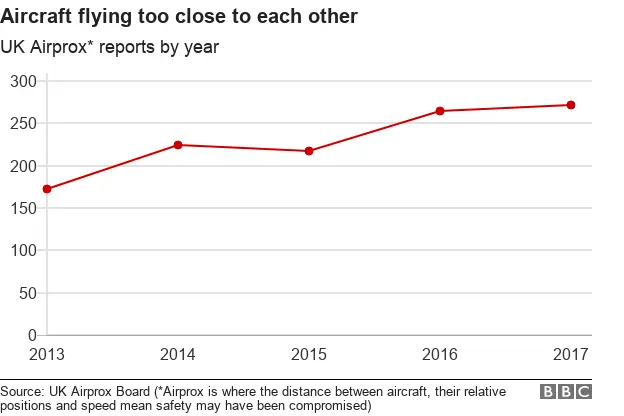
The CAA said incident clusters around greater London and the home counties were a symptom of crowded skies. However, other clusters - such as those over East Anglia, Yorkshire and Lincolnshire - were caused by largely empty skies.
"Pilots in this more open air space tend to relax and think they are in a much freer, more open, sky," said CAA spokesman Jonathan Nicholson. And that, he says, "can lead to an accident or an airprox".
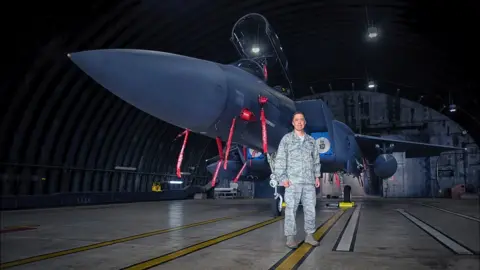
Hundreds of the more than 2,000 incidents investigated by the UK Airprox Board in the past decade involved military aircraft, including planes, helicopters, gliders, drones and even parachutists.
Fighters at Suffolk's RAF Lakenheath have been involved in nearly 30 airproxes. Recent examples include two F15s coming within 500ft of a civilian B350 aircraft over Marham in Norfolk and an F15 passing close to a police drone at about 500mph (800km/h) on the edge of Dartmoor.
But Colonel Donn Yates, who until July this year was responsible two squadrons of combat ready F-15s at Lakenheath, said he felt some airproxes were not as close as thought.
He said even well-trained civilian pilots tended to underestimate the full size of an F15 fighter jet.
"So when we see in reports people saying this person was 300ft or 500ft away in actuality we find the person was actually a mile or a mile-and-a-half away," he said.
Not all accidents or near-misses looked at by the BBC happened over land. Many took place at sea.
In 2013, a Super Puma helicopter ditched into the North Sea off Shetland with 18 workers from the Borgsten Dolphin platform aboard. Four people died.
In the past three years the AAIB investigated six commercial helicopter accidents out on North Sea platforms - three of them in 2017 alone.
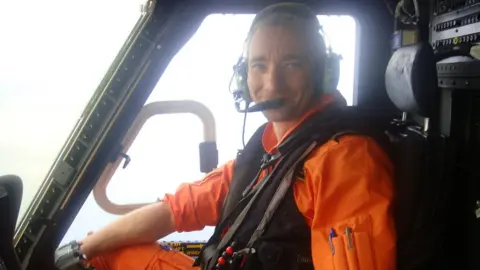 Phil Breeze-Lamb
Phil Breeze-LambFlying a helicopter in foul weather, says pilot Phil Breeze Lamb, is like "trying to balance a marble on top of an upturned bowl".
"Off-shore is an obstacle rich environment," he said. "On a good day it can be a piece of cake. In bad weather, it is completely different."
Flying instructor Paul Bazire, based at North Weald in Essex, has been involved in two airprox incidents and seen first-hand the result of a fatal accident that killed two men in 2014.
He said the relatively high number of accidents and near-misses in the South East reflected the high level of activity there.
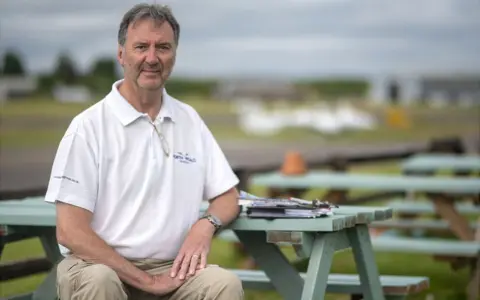
"The skies in the South East are much more compressed than elsewhere," he said.
Some of his customers come from as far away as Poland to fly in the South East precisely because the skies there are so busy.
"It is said that if you can fly here, you can fly anywhere," Mr Bazire said.
"Aviation in the UK is really safe," said Mr Nicholson of the CAA. "It is 20 times safer to fly in a light aircraft than to ride a horse."
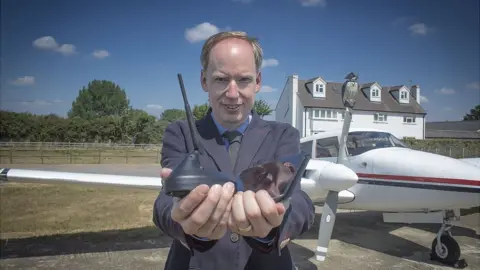
A decade ago, the CAA tried to get private pilots to fit their aircraft with transponders - devices that identify a craft to air traffic control. But the proposals met with strong resistance, he said, because of the costs pilots would have incurred fitting the devices.
"When commercial airliners started fitting transponders (in the early 1990s) the numbers of near-misses completely dropped - in fact they almost disappeared - overnight," says Mr Nicholson.
The CAA is poised to re-attempt getting pilots to fit much smaller safety devices, called transceivers, to their aircraft.
The CAA has been working with technology firms to build the devices, which are far cheaper than they were 10 years ago.
Trials of the devices are continuing.
"I think we will see much more take up with the latest technology," said Mr Nicholson.
See the full story on BBC Inside Out on Monday, 11 September, on BBC One in the east of England at 19:30 BST.